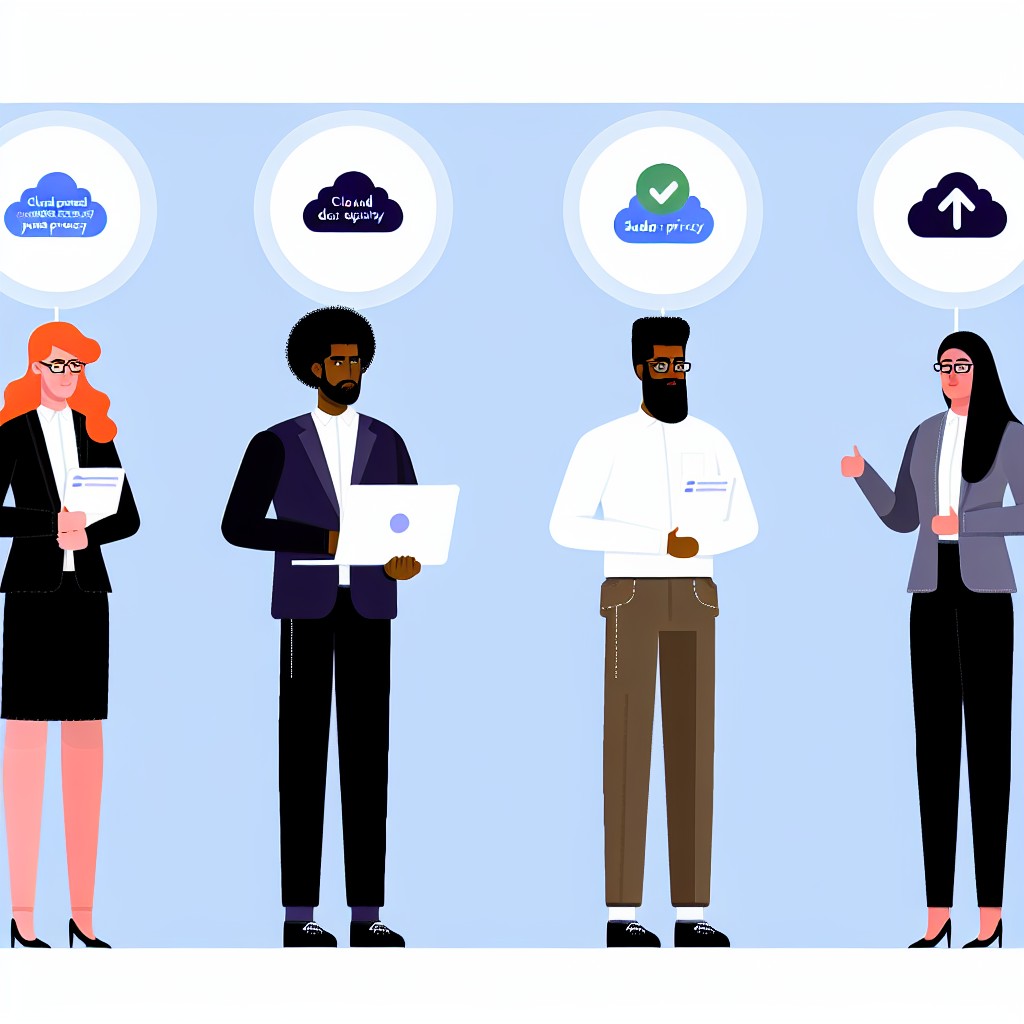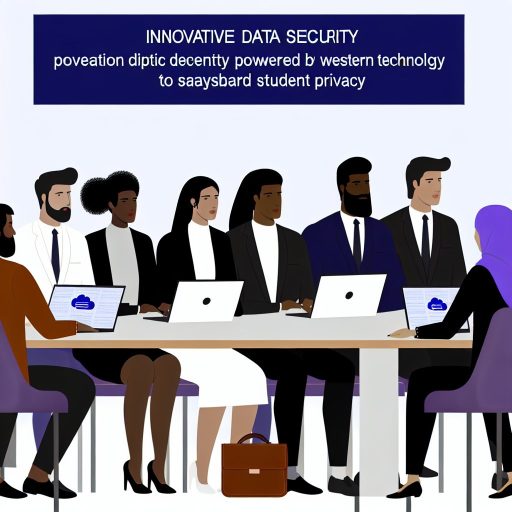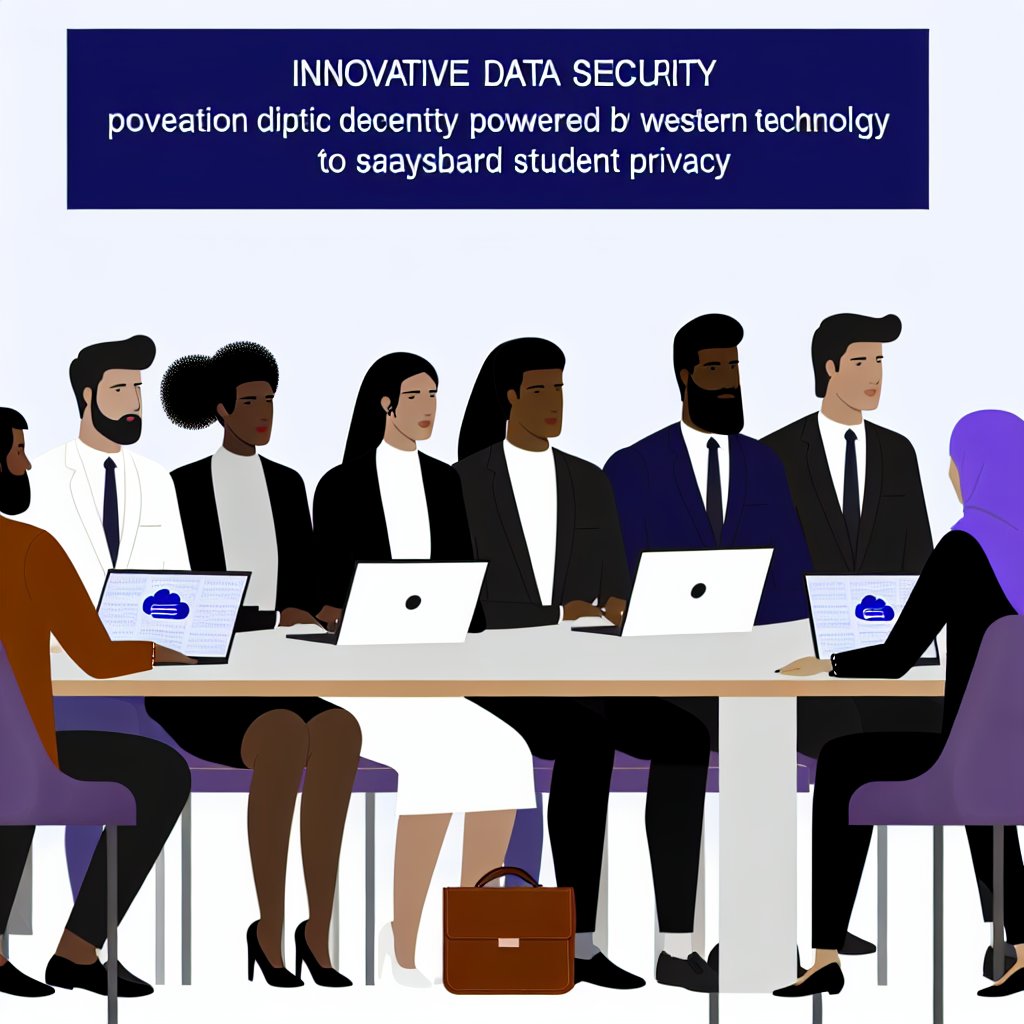Overview of Student Data Privacy Challenges in Educational Institutions
Complexity of Student Data Collection
Educational institutions collect vast amounts of student data daily.
This data includes personal, academic, and behavioral information.
Moreover, institutions gather health and disciplinary records for safety purposes.
Consequently, managing this diverse data creates significant privacy concerns.
Risks of Unauthorized Access and Data Breaches
Schools face increasing risks from cyberattacks targeting sensitive student information.
Hackers often exploit weak security measures to access student records.
Additionally, insider threats pose challenges when staff misuse their access privileges.
Therefore, unauthorized data exposure can harm students and damage institutional reputation.
Compliance with Privacy Regulations
Institutions must comply with laws like FERPA and COPPA to protect student privacy.
These laws impose strict rules on data access, sharing, and storage.
Noncompliance results in legal penalties and loss of public trust.
Hence, schools must implement robust policies aligning with regulatory requirements.
Challenges in Data Sharing and Collaboration
Schools often need to share data with third-party educational technology providers.
However, sharing increases the risk of exposing sensitive information unintentionally.
Furthermore, inconsistent privacy practices among partners complicate secure collaboration.
Thus, careful vetting and secure data transfer protocols are essential.
Impact of Limited Resources and Expertise
Many educational institutions lack dedicated cybersecurity personnel.
Budget limitations hinder the adoption of advanced data protection solutions.
As a result, schools struggle to keep up with evolving cyber threats effectively.
In contrast, investing in training and modern security tools can mitigate these challenges.
The Role of Cloud Computing in Enhancing Data Security for Schools
Improving Data Protection Through Cloud Technologies
Cloud computing provides schools with advanced tools to safeguard sensitive information.
It enables seamless encryption of student data, both in transit and at rest.
Additionally, cloud platforms offer automated backups to prevent data loss.
Schools benefit from continuous monitoring for unusual activities on cloud systems.
As a result, potential cyber threats can be detected and mitigated promptly.
Moreover, cloud services allow for quick disaster recovery to minimize downtime.
This strengthens schools’ ability to maintain secure and available data environments.
Access Control and User Authentication Features
Cloud providers implement strict user authentication methods to verify identities.
Multi-factor authentication reduces risks of unauthorized access significantly.
Furthermore, role-based access restricts data availability to only authorized personnel.
This ensures teachers and administrators see only the information necessary for their roles.
Consequently, the risk of accidental or intentional data exposure decreases.
Scalability and Cost Efficiency for Educational Institutions
Cloud solutions offer scalable security measures that grow with the school’s needs.
Therefore, institutions pay only for the security services they currently require.
This flexibility helps schools manage budgets without compromising data safety.
Put Your Tech Company on the Map!
Get featured on Nicholas Idoko’s Blog for just $50. Showcase your business, boost credibility, and reach a growing audience eager for tech solutions.
Publish NowBesides, cloud providers regularly update security protocols to address evolving threats.
Thus, schools benefit from cutting-edge protections without additional IT staff burdens.
Compliance with Privacy Regulations
Cloud computing helps schools meet legal requirements such as FERPA and COPPA.
Providers maintain certifications to demonstrate adherence to privacy standards.
Schools can rely on these features to protect student information legally and ethically.
Regular audits by cloud companies also promote transparency and accountability.
Partnering with Trusted Cloud Service Providers
Choosing reputable cloud vendors ensures robust security frameworks are in place.
Providers like BlueSky Cloud Solutions specialize in education-focused data solutions.
They offer tailored security strategies designed specifically for school environments.
By partnering effectively, schools gain expert support and continuous protection.
This collaboration further strengthens the defense of student privacy.
Key Cloud-Powered Technologies Used to Protect Student Information
Advanced Encryption Techniques
Cloud providers implement advanced encryption to secure student data at rest.
They also secure data in transit to prevent unauthorized access.
Technologies like AES-256 and TLS protocols maintain data confidentiality.
Consequently, schools can confidently store records knowing encryption protects them.
Access Control and Identity Management
Effective access control limits who can view or modify student information.
Cloud platforms utilize multi-factor authentication to strengthen user verification.
Role-based access restricts data access based on user responsibilities.
This approach minimizes risks by ensuring only authorized staff gain entry.
Data Loss Prevention and Backup Solutions
Cloud solutions offer automated backups to protect against accidental data loss.
These backups enable quick recovery of student records after incidents.
Data loss prevention tools monitor and block unauthorized data transfers.
Thus, school districts can prevent leaks and maintain continuous data availability.
Real-Time Threat Detection and Monitoring
Cloud security platforms provide real-time monitoring for potential cyber threats.
Machine learning algorithms detect unusual activities across student data systems.
Alerts enable IT teams to respond swiftly to prevent breaches.
Ongoing surveillance enhances the overall security posture.
Compliance Automation and Reporting
Cloud services help schools comply with privacy regulations like FERPA and COPPA.
Automated tools generate reports and audit logs to track data usage.
This transparency supports accountability for handling student information.
Compliance automation reduces the administrative burden on educators.
Discover More: Real-Time Collaboration Software for Global Classrooms and Cultural Exchange
Implementing Encryption and Access Controls in Cloud Environments
Encryption Techniques for Protecting Student Data
Encryption transforms sensitive student data into unreadable ciphertext.
Cloud providers like Veridian Cloud use advanced encryption standards to secure data.
Data should be encrypted both at rest and in transit to ensure full protection.
Put Your Tech Company on the Map!
Get featured on Nicholas Idoko’s Blog for just $50. Showcase your business, boost credibility, and reach a growing audience eager for tech solutions.
Publish NowFor example, AES-256 encryption offers a strong security level against cyber threats.
Additionally, key management plays a crucial role in securing encrypted data effectively.
Organizations must implement strict policies for encryption key storage and rotation.
Moreover, end-to-end encryption ensures that only authorized parties can access sensitive information.
Consequently, unauthorized users or malicious actors cannot intercept student records.
Access Controls to Limit Data Exposure
Access controls restrict who can view or modify student information within cloud systems.
Role-based access control (RBAC) assigns permissions based on user roles, limiting excess access.
For instance, teachers may access grades, but not financial data of students.
Multi-factor authentication (MFA) adds an extra layer of identity verification.
Implementing MFA reduces the risk of unauthorized access through compromised passwords.
Furthermore, audit logs help track access attempts and detect suspicious activities.
Organizations should regularly review access permissions to prevent privilege creep.
In this way, they can maintain strict control over sensitive student information.
Best Methods for Secure Cloud Configuration
First, ensure cloud services are configured to enforce encryption by default.
Then, administrators must apply the principle of least privilege across all user accounts.
Also, regularly update and patch cloud infrastructure to close security vulnerabilities.
Using secure APIs to access cloud services minimizes exposure to attacks.
Many companies, such as Sentinel Learning Technologies, invest in continuous cloud security monitoring.
This proactive approach helps detect threats before they compromise data privacy.
Finally, educating staff and students about secure cloud usage fosters a culture of security.
Combining encryption and robust access controls ensures effective protection of student privacy in the cloud.
Uncover the Details: AI-Enhanced Content Creation Software for Developing Educational Materials
Compliance with Legal Frameworks in Cloud Data Security
Understanding FERPA Requirements
FERPA protects the privacy of student education records in the United States.
Institutions must ensure cloud systems comply with FERPA regulations.
Therefore, providers like Summit Cloud Services implement strict access controls.
These controls limit data access to authorized personnel only.
Additionally, cloud platforms encrypt student data to prevent unauthorized access.
Encryption ensures sensitive information remains confidential during transmission and storage.
Moreover, audit logs track access and modifications, supporting FERPA compliance.
Adhering to GDPR Standards
GDPR regulates the processing of personal data for individuals in the European Union.
Cloud providers such as Altaris Cloud Solutions prioritize GDPR conformity.
They implement data minimization to collect only necessary student information.
Furthermore, cloud vendors obtain explicit consent before processing personal data.
Data subjects hold rights to access, rectify, or erase their data under GDPR.
Cloud platforms support these rights with user-friendly data management tools.
Put Your Tech Company on the Map!
Get featured on Nicholas Idoko’s Blog for just $50. Showcase your business, boost credibility, and reach a growing audience eager for tech solutions.
Publish NowAlso, GDPR requires prompt breach notifications, which cloud providers handle diligently.
Integrating Compliance into Cloud Security Strategies
Organizations must evaluate cloud vendors’ compliance certifications and audits.
For instance, Silverpine Education Trust selects providers certified in ISO 27001.
These certifications signal robust security and compliance practices.
Moreover, legal teams collaborate with IT departments to align policies with FERPA and GDPR.
Training staff on compliance requirements reduces the risk of data mishandling.
Regular compliance assessments ensure ongoing adherence to legal changes.
Ultimately, combining legal frameworks with advanced cloud security protects student privacy effectively.
Find Out More: Machine Learning Algorithms for Personalized Student Tutoring
Strategies for Secure Data Sharing Between Schools, Students, and Third Parties
Implementing Strong Authentication and Access Controls
Schools must use multi-factor authentication to verify user identities.
Access controls should grant permissions based on roles and responsibilities.
Additionally, secure password policies must enforce regular updates and complexity.
These measures prevent unauthorized access to sensitive student information.
Utilizing Encryption to Protect Data in Transit and at Rest
Data should always be encrypted when transferred between parties.
Encryption algorithms like AES-256 secure stored data against breaches.
Moreover, Transport Layer Security (TLS) guarantees confidentiality during online exchanges.
Using encryption reduces the risk of data interception or tampering.
Establishing Clear Data Sharing Agreements
Schools must create formal agreements with students and external providers.
These documents specify data usage, responsibilities, and privacy safeguards.
Furthermore, agreements should outline strict compliance with laws such as FERPA.
Such transparency helps build trust among all involved parties.
Deploying Cloud Solutions with Comprehensive Security Features
Cloud services like NimbusEd offer tailored data protection for educational institutions.
They include features such as continuous monitoring, automated backups, and threat detection.
Cloud providers regularly update security protocols to address evolving risks.
Schools gain flexibility without sacrificing the safety of student records.
Training Staff and Students on Data Privacy Best Practices
Regular training programs raise awareness of potential cyber threats.
Staff members learn how to handle data responsibly and respond to incidents.
Students also benefit from understanding their privacy rights and safeguards.
Consequently, organizations strengthen their overall security posture through education.
Monitoring and Auditing Data Access and Transfers
Continuous monitoring detects unusual activities or unauthorized access.
Audit trails maintain detailed logs of who accessed or shared information.
This oversight enables quick detection and response to security violations.
Additionally, regular audits ensure adherence to established policies and regulations.
Leveraging Privacy-Enhancing Technologies
Techniques such as anonymization protect student identities during data analysis.
Differential privacy methods limit exposure of individual information.
Put Your Tech Company on the Map!
Get featured on Nicholas Idoko’s Blog for just $50. Showcase your business, boost credibility, and reach a growing audience eager for tech solutions.
Publish NowThese technologies allow for valuable insights without compromising confidentiality.
Therefore, schools can collaborate while safeguarding personal data effectively.
Find Out More: AI Chatbots as Virtual Teaching Assistants in Online Courses

The Impact of AI and Machine Learning on Detecting and Preventing Data Breaches
Enhancing Threat Detection Capabilities
Artificial intelligence revolutionizes how organizations detect data breaches.
Machine learning algorithms analyze vast amounts of data at incredible speeds.
They identify unusual patterns that indicate potential threats.
For instance, FortifyGuard, a cybersecurity firm, uses AI to detect anomalies in real-time.
Moreover, AI-driven systems learn from previous attacks to improve future detection.
This continuous learning reduces false positives and enhances accuracy.
Proactive Prevention through Predictive Analytics
Machine learning enables predictive analytics to foresee and prevent breaches.
By examining historical attack data, AI predicts vulnerable points in networks.
Consequently, IT teams can address risks before attackers exploit them.
For example, SafeEdu Solutions applies AI to protect student databases proactively.
This approach minimizes unauthorized access and data leaks effectively.
Automating Response and Mitigation Processes
AI automates immediate responses to detected threats, limiting damage.
When a breach is detected, systems trigger predefined security protocols instantly.
Such automation reduces response times compared to manual intervention.
Furthermore, AI tools continuously update security measures as threats evolve.
Teams, like those at CyberShield Analytics, benefit from AI-assisted breach mitigation.
Challenges and Considerations in AI-Driven Security
Despite benefits, AI systems can face challenges such as data bias.
Ensuring diverse training data helps AI models generalize better against threats.
Moreover, attackers may attempt to deceive AI with sophisticated evasion techniques.
Therefore, human oversight remains crucial alongside AI-powered systems.
Security experts at Vantage Cyber Defense emphasize a balanced approach to AI use.
Advancements and Future Directions in AI for Data Protection
AI and machine learning will become central to robust data security strategies.
Emerging technologies promise enhanced privacy protection for student information.
Collaborations between educational institutions and AI firms accelerate these advancements.
Ultimately, AI empowers organizations to stay ahead of evolving cyber threats.
This progress safeguards student privacy more effectively than ever before.
Best Practices for Cloud Security Management Tailored to Education Sectors
Implementing Robust Access Controls
Educational institutions must enforce strict access controls to protect sensitive data.
Administrators should assign permissions based on user roles.
This limits data exposure to authorized personnel only.
Furthermore, multi-factor authentication strengthens login security.
It ensures that only verified users can access cloud resources.
Encrypting Data at Rest and in Transit
Institutions should encrypt all student data stored in the cloud.
Put Your Tech Company on the Map!
Get featured on Nicholas Idoko’s Blog for just $50. Showcase your business, boost credibility, and reach a growing audience eager for tech solutions.
Publish NowThis prevents unauthorized access even if the data is compromised.
Additionally, encrypting data during transmission protects it from interception.
End-to-end encryption maintains confidentiality between endpoints.
Many cloud service providers offer built-in encryption tools for ease of use.
Regular Security Audits and Monitoring
Continuous monitoring helps detect and respond to threats quickly.
Security audits identify vulnerabilities before attackers exploit them.
Automated tools can scan cloud environments for suspicious activity.
Moreover, logging user actions supports compliance and forensic analysis.
These practices build a proactive security posture for schools.
Employee Training and Awareness Programs
Staff must understand cloud security risks and best practices.
Training reduces the likelihood of accidental data breaches by employees.
Schools should hold regular security workshops tailored to educational settings.
Clear policies empower teachers and administrators to protect student privacy.
Engaged staff contribute significantly to overall data security.
Choosing Compliant Cloud Service Providers
Schools should select providers that comply with education regulations like FERPA.
Compliance ensures that student privacy laws are respected.
Vendors must offer strong security features and transparent data handling.
It is also critical to review service level agreements carefully.
This guarantees the provider’s commitment to safeguarding educational data.
Regular Data Backup and Disaster Recovery Planning
Backing up student data prevents permanent loss due to incidents.
Institutions must implement automated backup schedules.
Disaster recovery plans help restore data swiftly after disruptions.
Testing these plans regularly ensures preparedness for real-world scenarios.
Therefore, schools can maintain continuous access to critical information.
Case Studies of Successful Cloud-Powered Data Security Implementations in Schools
Evergreen School District’s Cloud Migration
Evergreen School District transitioned its student data to a secure cloud platform in 2022.
This migration enhanced data encryption and access controls significantly.
Consequently, the district reduced unauthorized data access incidents by 70% within a year.
Moreover, Evergreen deployed multi-factor authentication for all staff members.
This extra layer strengthened student data protection across all devices.
Additionally, they implemented continuous compliance monitoring tailored to education regulations.
The IT team praised the cloud solution’s intuitive dashboard for managing security policies.
Thus, Evergreen improved data privacy without disrupting daily school operations.
Bright Futures Academy’s Cloud Security Overhaul
Bright Futures Academy collaborated with Sentinel Cybersecurity in early 2023.
The partnership focused on securing student records using a cloud data loss prevention system.
First, Sentinel conducted a thorough risk assessment to identify vulnerabilities.
Put Your Tech Company on the Map!
Get featured on Nicholas Idoko’s Blog for just $50. Showcase your business, boost credibility, and reach a growing audience eager for tech solutions.
Publish NowSubsequently, the school adopted automated threat detection and incident response tools.
These tools quickly isolated suspicious activities and prevented potential data breaches.
Furthermore, Bright Futures offered regular training sessions on cloud security best practices.
Staff engagement increased, resulting in fewer human errors compromising student privacy.
The successful overhaul earned the school recognition from the state education board.
Maple Ridge High School’s Cloud-Based Identity Management
Maple Ridge High School implemented a cloud-based identity and access management solution in late 2023.
The system centralized user credentials for students, teachers, and administrators.
Consequently, it simplified secure access to educational applications and resources.
Additionally, role-based permissions limited data access to only necessary users.
Maple Ridge reduced the risk of insider threats by regularly auditing permission assignments.
The cloud system also enabled single sign-on, enhancing user convenience and security.
Notably, the school saw a 50% drop in password-related help desk tickets post-implementation.
Overall, the identity management project greatly strengthened the privacy of student information.
Sunset Valley Elementary’s Hybrid Cloud Firewall Solution
Sunset Valley Elementary adopted a hybrid cloud firewall to guard against external cyber threats.
The firewall combines cloud intelligence with on-premises hardware controls.
It effectively filters malicious traffic targeting student records systems.
Moreover, automated updates ensure the firewall adapts to emerging cybersecurity risks fast.
The school’s technology director reported a substantial decrease in phishing attempts reaching staff inboxes.
Parents expressed greater confidence in the school’s data security practices after the upgrade.
Finally, Sunset Valley continues to monitor and refine its security posture leveraging cloud analytics.
Key Recommendations from Successful Cloud Security Implementations
Schools should begin with comprehensive risk assessments before cloud adoption.
Next, deploying multi-factor authentication strengthens data access security effectively.
Also, continuous monitoring tools help detect suspicious activity early on.
Regular staff training reduces security incidents caused by human error.
Role-based access controls protect sensitive student data from overexposure.
Hybrid solutions provide flexible protection against internal and external threats.
Ultimately, a cloud-powered security strategy ensures sustainable student privacy protection.
Future Trends in Cloud-Based Solutions for Protecting Student Privacy
Advancements in Artificial Intelligence and Machine Learning
Artificial intelligence increasingly enhances cloud security mechanisms for student data.
Machine learning algorithms detect unusual access patterns quickly and accurately.
Consequently, institutions can prevent unauthorized data breaches more effectively.
Moreover, AI-driven tools automate compliance monitoring with evolving privacy regulations.
These technologies ensure that student information remains confidential and secure.
Integration of Zero Trust Security Models
Cloud providers adopt zero trust architectures to strengthen data protection.
This model requires continuous verification of every access request regardless of location.
As a result, it minimizes risks associated with insider threats and compromised credentials.
Put Your Tech Company on the Map!
Get featured on Nicholas Idoko’s Blog for just $50. Showcase your business, boost credibility, and reach a growing audience eager for tech solutions.
Publish NowFurthermore, zero trust ensures least-privilege access, reducing data exposure.
Schools benefit from tighter control over who accesses sensitive student records.
Enhanced Encryption Techniques and Data Masking
Emerging encryption methods protect data both at rest and in transit within the cloud.
Quantum-resistant algorithms prepare systems for future cryptographic challenges.
In addition, data masking techniques enable secure sharing without revealing personal details.
These solutions support collaborative research while preserving student privacy.
Cloud providers like ArdentData and SentinelGuard lead innovation in this area.
Improved Regulatory Compliance and Auditing Tools
Future cloud platforms incorporate automated compliance frameworks tailored to education laws.
Tools simplify adherence to FERPA, GDPR, and other regulations protecting student data.
Additionally, audit trails become more transparent and tamper-proof.
Consequently, education administrators gain confidence in data governance practices.
Real-time compliance dashboards foster proactive risk management and reporting.
Greater Focus on Privacy-First Cloud Architectures
Cloud solutions increasingly prioritize privacy by design principles from inception.
Such architectures minimize unnecessary data collection and retention.
Consequently, students’ personal information is processed only when vital.
This approach reduces overall risk and builds trust between institutions and families.
Companies like EtheraCloud champion privacy-first upgrades in education technology.
Collaborative Efforts for Standardizing Student Data Protection
Experts from academia and industry collaborate to develop universal cloud security standards.
These guidelines facilitate interoperability between different cloud service providers.
Moreover, standardized protocols enhance the consistency of privacy safeguards globally.
Education leaders, such as Dr. Laura Mitchell, drive advocacy for these unified measures.
Such partnerships strengthen the overall resilience of student data protection strategies.
Additional Resources
ESET Cybersecurity | Enterprise, Business and Home Solutions …
Family Educational Rights and Privacy Act (FERPA) – Microsoft …
Before You Go…
Hey, thank you for reading this blog post to the end. I hope it was helpful. Let me tell you a little bit about Nicholas Idoko Technologies.
We help businesses and companies build an online presence by developing web, mobile, desktop, and blockchain applications.
We also help aspiring software developers and programmers learn the skills they need to have a successful career.
Take your first step to becoming a programming expert by joining our Learn To Code academy today!
Be sure to contact us if you need more information or have any questions! We are readily available.
[E-Books for Sale]
1,500 AI Applications for Next-Level Growth: Unleash the Potential for Wealth and Innovation
$5.38 • 1,500 AI Applications • 228 pages
Are you ready to tap into the power of Artificial Intelligence without the tech jargon and endless guesswork? This definitive e-book unlocks 1,500 real-world AI strategies that can help you.
See All 1,500 AI Applications of this E-Book
750 Lucrative Business Ideas: Your Ultimate Guide to Thriving in the U.S. Market
Put Your Tech Company on the Map!
Get featured on Nicholas Idoko’s Blog for just $50. Showcase your business, boost credibility, and reach a growing audience eager for tech solutions.
Publish Now$49 • 750 Business Ideas • 109 pages
Unlock 750 profitable business ideas to transform your future. Discover the ultimate guide for aspiring entrepreneurs today!
See All 750 Business Ideas of this E-Book
500 Cutting-Edge Tech Startup Ideas for 2024 & 2025: Innovate, Create, Dominate
$19.99 • 500 Tech Startup Ideas • 62 pages
You will get inspired with 500 innovative tech startup ideas for 2024 and 2025, complete with concise descriptions to help you kickstart your entrepreneurial journey in AI, Blockchain, IoT, Fintech, and AR/VR.
We Design & Develop Websites, Android & iOS Apps
Looking to transform your digital presence? We specialize in creating stunning websites and powerful mobile apps for Android and iOS. Let us bring your vision to life with innovative, tailored solutions!
Get Started Today





